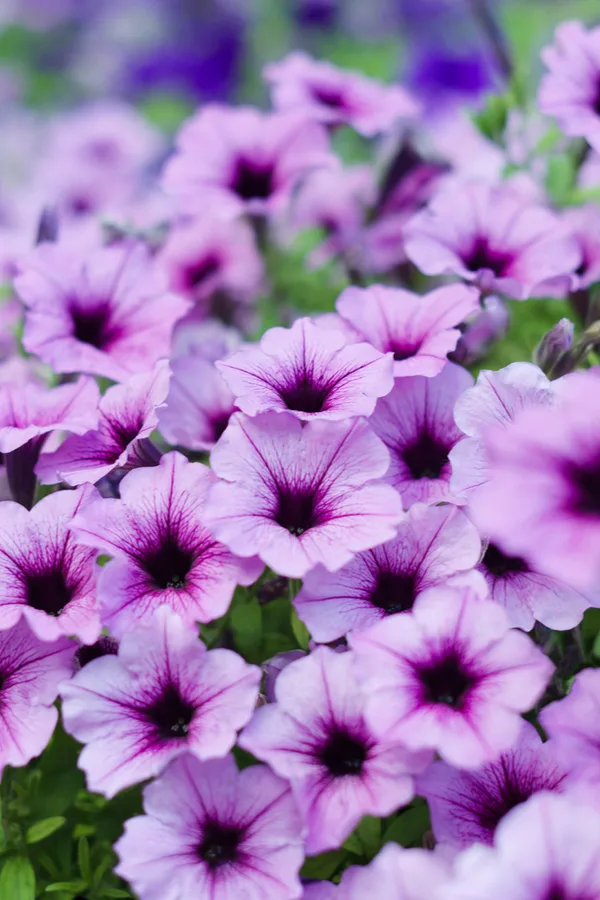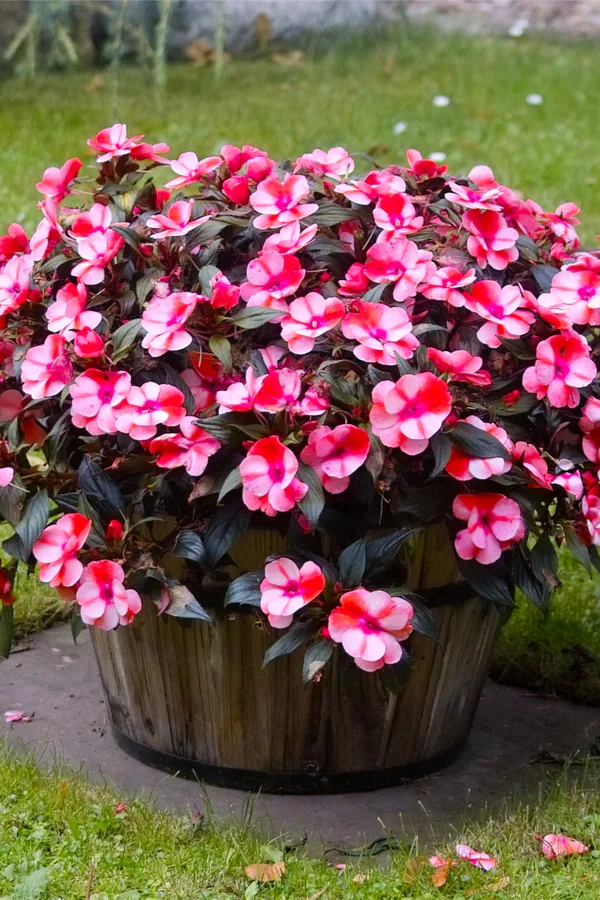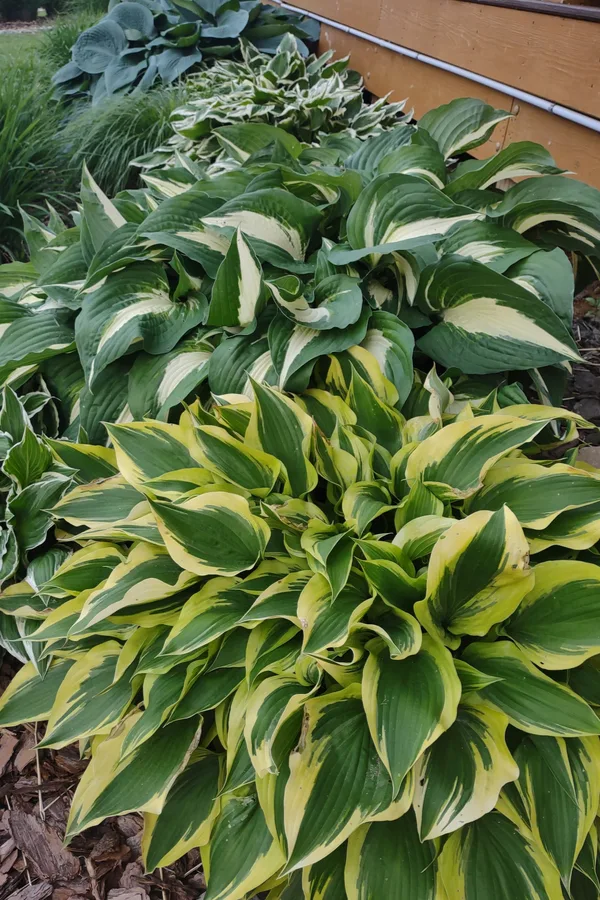If you have ever wondered how to deadhead flowers, or why it’s so important for keeping your plants healthy and blooming beautiful – today’s article is for you!
Deadheading is the practice of removing old and decaying blooms from plants. And whether you are growing hanging baskets, pots and containers filled with annuals or flowering perennials in your beds, it can make an incredible difference in the long-term vitality of your plants.
In fact, in many instances, especially with annual flowers, it’s the single biggest factor to keep blooms in full force. But don’t think it’s just for your flowering pots, containers and baskets.

As you will see below, deadheading can be just as important for perennials too. Not just for producing more blooms, but in helping to keep their foliage vibrant and beautiful as well.
Deadheading Annuals & Perennials – Why It Matters
One thing is for sure, no matter the plant, old blooms are a drag on the resources of a plant.
Not only are fading blooms unsightly, they also rob serious nutrients from the plant. Nutrients that instead of trying to help a dying bloom, should be going to help produce new foliage, blooms and more flowers.
Unfortunately, by their very nature, plants are always working to heal and fix their own failing parts. Whether it be a broken branch, damaged stems and foliage, or blooms and flowers that are struggling to survive from old age.

Even though each and every flower has a definitive life span, plants will continue to send resources to the failing bloom. All in an effort to try to keep them alive and well as long as possible.
But by removing these blooms as soon as they begin to fade, you stop the process entirely. And, on cue, the plant stops wasting resources on the old blooms.
Even better, it turns its efforts instead to creating new foliage, blooms and best of all, more flowers!
How To Deadhead Annual Flowers & Perennial Plants
The benefits of deadheading annuals vs. perennials certainly vary. For annual flowers, deadheading is all about helping to keep plants in massive color. The more often your remove failing blooms, the more new blooms will appear.
But for perennial plants, although deadheading can help to promote additional blooms and prolonged blooming periods, it’s even more important for helping to keep the foliage strong and healthy for the duration of the growing season.

Here is a look at how to deadhead both annuals and perennials, and why it can make such a menaningful impact on the plants in your landscape.
Deadheading Annuals – How To Deadhead Flowers
When it comes to annuals like geraniums, petunias, impatiens, marigolds and more, deadheading is critical to keep plants in full flower-power mode.
As soon as first of the blooms begins to fade, it’s time to take action. Whether in flowering pots, containers, or in flowerbeds, remove old blooms every few days to keep plants productive.
Most deadheading can be done easily by hand. Annual flowers, especially as they age, pull or pinch away easily from the plants. Simply work your hand around the plant, slightly combing your fingers through the older blooms.

For annuals with longer stems such as geraniums, zinnias and cosmos, snip the stems of the failing blooms back with a good pair of pruning snips as far to the base of the plant as you can. This will help for new stems for bloom shoots at a much faster pace.
For best results, deadhead annual flowers at least once or twice a week. Not only will it keep your plants reproducing blooms, it will also help keep them looking fresh and alive.
Deadheading Perennials – How To Deadhead Flowers
There are some perennials that mimic annuals, and flower from spring to fall. Other have extended, or double bloom cycles and can flower multiple times each season. For these perennials, removing spent blooms will have the same effect as with annuals, allowing the plants to continue blooming strong.
Perennials like blanketflower, hardy geraniums and lavender all fall under this category. And by regularly pinching off old flowers and stems, you can keep new blooms coming on.
However, for the large majority of perennials, bloom cycles are regulated to a specific two or three week period. But even with these limited flowering times, deadheading old blooms still helps the plant immensely.

Case in point, hosta plants. The foliage of hostas often becomes ragged and worn out as soon as the plant finishes its blooming cycle. That is in part because hostas use so much energy to produce and care for their blooms.
Keeping Perennials Looking Strong
And as they use that energy up, it leaves little in the tank for keeping their leaves in shape. But by removing the tall, wispy blooms as soon as they begin to fail, the plant is able to then shift it’s energy to growing a healthy, full canopy of foliage for the remainder of the summer.

The result is a hosta plant that looks incredibly full all season long. This is the case for many other perennials as well. Daylilies, daisies, coneflower, black-eyed susan and many other common perennials all will benefit from removing old bloom.
And not only will your plants perform better, but by removing the unsightly old blooms, they will look better too!
Here is to deadheading your annuals and perennials this year, and to having healthier, more productive, and more colorful blooms all summer long! Happy Gardening – Jim and Mary.
Jim and Mary Competti have been writing gardening, DIY and recipe articles and books for over 15 years from their 46 acre Ohio farm. The two are frequent speakers on all things gardening and love to travel in their spare time.
As always, feel free to email us at thefarm@owgarden.com with comments, questions, or to simply say hello! You can sign up for our free email list in the subscribe now box in the middle of this article. Follow us on Facebook here : OWG Facebook. This article may contain affiliate links.
